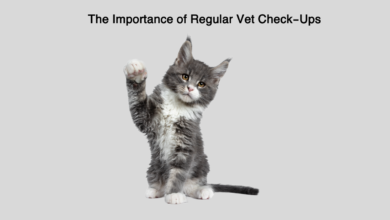
When it comes to ensuring your dog’s safety and comfort, choosing the right collar and leash is essential. These tools not only aid in managing your pet during walks but also play a crucial role in their overall well-being. With so many options available, it can be overwhelming to determine which combination best suits your dog’s needs.

This guide will walk you through the key factors to consider and offer practical advice for selecting the perfect collar and leash.
Understanding Dog Collars
1. Types of Collars
- Flat Collars: These are the most common type of collars. They are simple, adjustable, and come in various materials like nylon, leather, and fabric. Flat collars are suitable for everyday use and are ideal for dogs who are comfortable with wearing a collar regularly.
- Martingale Collars: Also known as limited-slip collars, these are designed to provide a gentle correction to prevent dogs from slipping out. They are particularly useful for dogs with narrow heads and broad necks. The collar tightens slightly when pulled but does not choke the dog.
- Harnesses: While technically not a collar, harnesses distribute pressure across a larger area of the dog’s body, making them an excellent choice for dogs who pull on the leash or have respiratory issues. They come in various styles including front-clip and back-clip harnesses.
- Breakaway Collars: These collars are designed to release quickly if they get caught on something, preventing choking or injury. They are often used for cats but can also be beneficial for dogs who are prone to getting their collars snagged.
2. Materials and Durability
- Nylon: Nylon collars are durable, affordable, and easy to clean. They come in various colors and patterns, making them a popular choice for pet owners. However, they may wear out faster than other materials, especially if exposed to water regularly.
- Leather: Leather collars are stylish and long-lasting. They age well and can become softer and more comfortable over time. However, they require regular maintenance to keep them in good condition and can be more expensive than nylon options.
- Fabric: Fabric collars offer a range of designs and are often padded for added comfort. They can be less durable than nylon or leather but are a good choice for dogs with sensitive skin.
3. Sizing and Fit
The right fit is crucial for your dog’s comfort and safety. Measure your dog’s neck circumference and choose a collar that allows for a snug fit without being too tight. You should be able to fit two fingers between the collar and your dog’s neck. Adjustable collars are often the best option as they allow you to modify the size as needed.
Selecting the Right Leash
1. Types of Leashes
- Standard Leashes: Typically 4 to 6 feet long, standard leashes offer control and allow you to keep your dog close. They are the most common type of leash and are suitable for everyday walks.
- Retractable Leashes: These leashes extend and retract, giving your dog more freedom to explore. However, they can be challenging to control and are not recommended for dogs that pull or have a tendency to run off.
- Training Leashes: Often longer than standard leashes, training leashes (usually 10 to 30 feet) are used for recall training and teaching dogs to walk on a loose leash. They offer more freedom while still maintaining control.
- Hands-Free Leashes: These leashes can be worn around the waist or across the body, allowing you to have your hands free for other tasks. They are useful for jogging or walking with multiple dogs.
2. Materials and Comfort
- Nylon: Like collars, nylon leashes are durable, lightweight, and easy to clean. They are a good choice for most dogs but can cause discomfort if they are too thin or have a rough texture.
- Leather: Leather leashes are sturdy and comfortable to hold. They are less likely to cause friction burns on your hands but require proper care to maintain their condition.
- Rope: Rope leashes are strong and durable, making them suitable for large or strong dogs. They can be heavy and may not be as comfortable to handle as other materials.
3. Choosing the Right Length
The length of the leash affects how much freedom your dog has and how much control you have. Short leashes (4 to 6 feet) are ideal for urban areas where you need to keep your dog close, while longer leashes (10 to 30 feet) are better for open spaces where you want to give your dog more freedom to explore.
Tips for Effective Use
- Training: Proper leash training is essential for a safe and enjoyable walk. Teach your dog to walk calmly on a leash and avoid pulling. Use positive reinforcement to encourage good behavior.
- Regular Checks: Inspect your dog’s collar and leash regularly for signs of wear and tear. Replace any damaged or worn-out equipment to prevent accidents.
- Safety Considerations: Ensure that the collar you choose has identification tags and that the leash is strong enough to handle your dog’s strength. Consider using a reflective or illuminated collar and leash for visibility during low-light conditions.
Conclusion
Selecting the right collar and leash for your dog involves considering their size, behavior, and specific needs. By understanding the different types and materials available, you can make an informed choice that enhances your dog’s comfort and safety. Remember that regular maintenance and proper training are key to ensuring a positive experience for both you and your furry friend.




